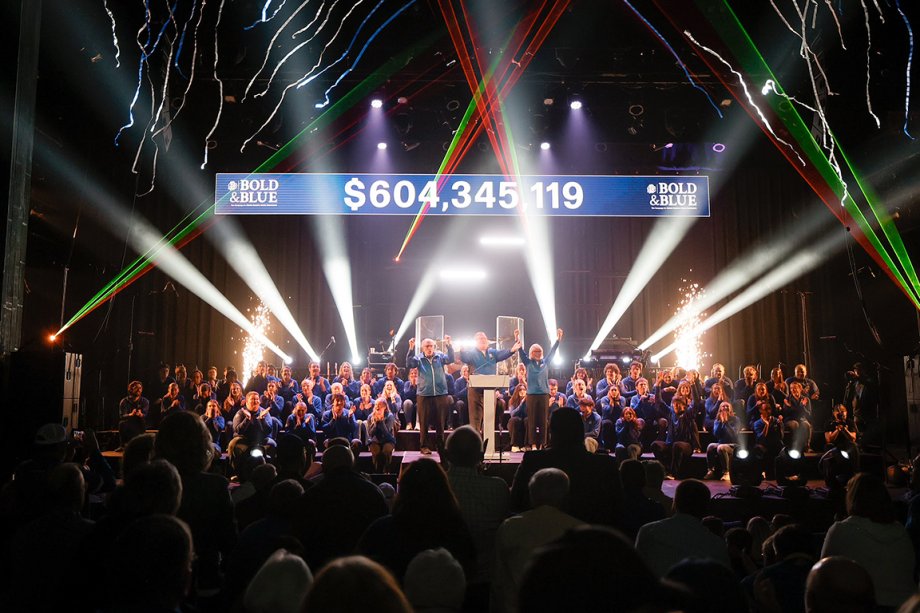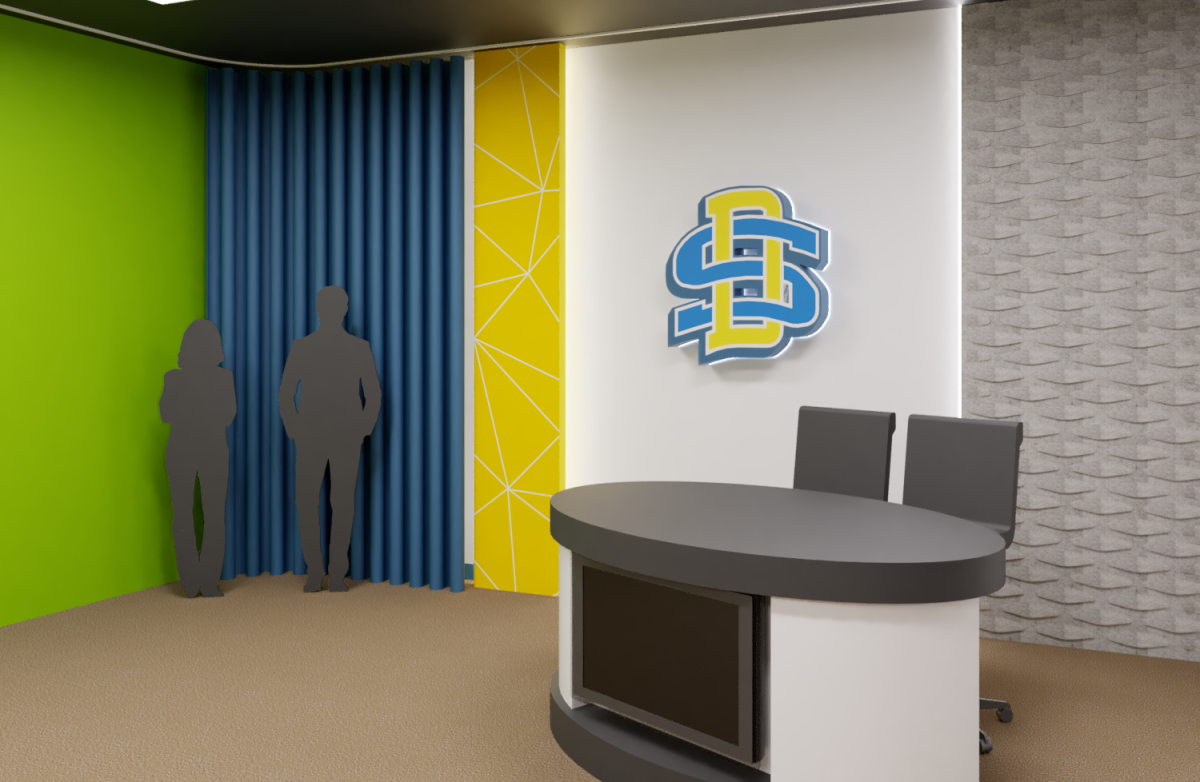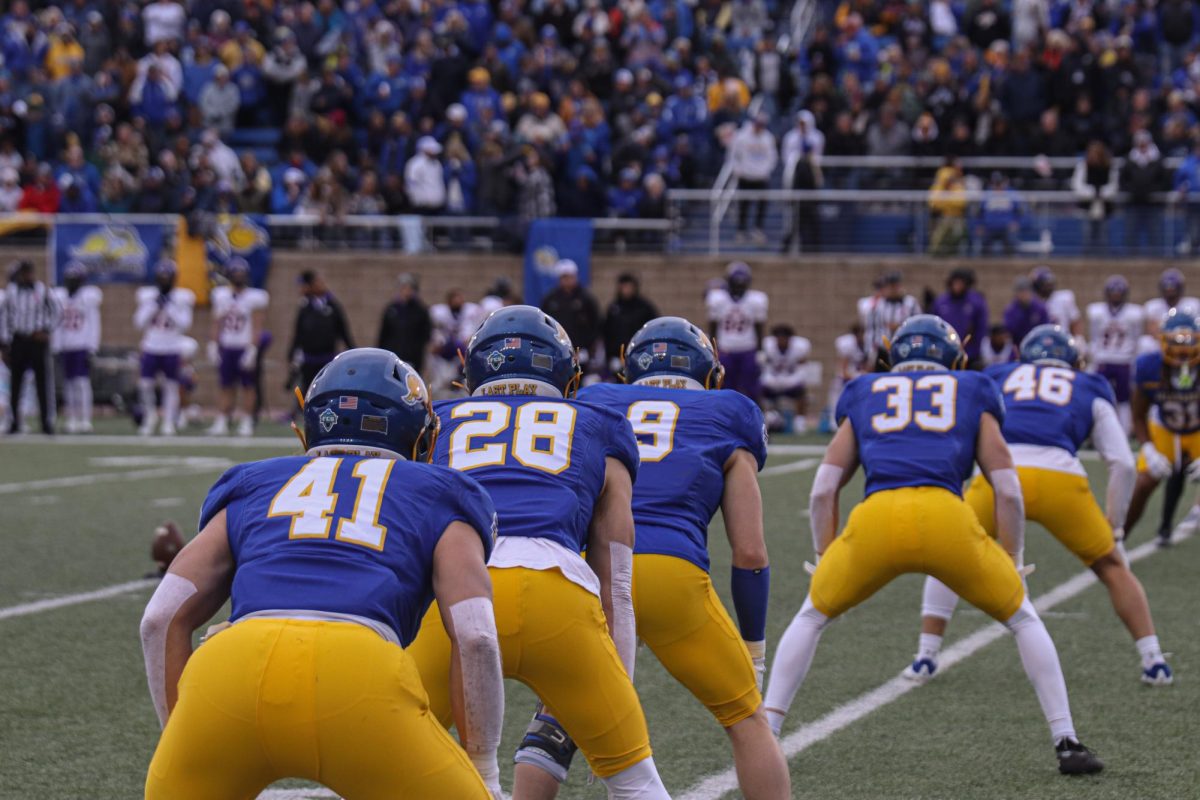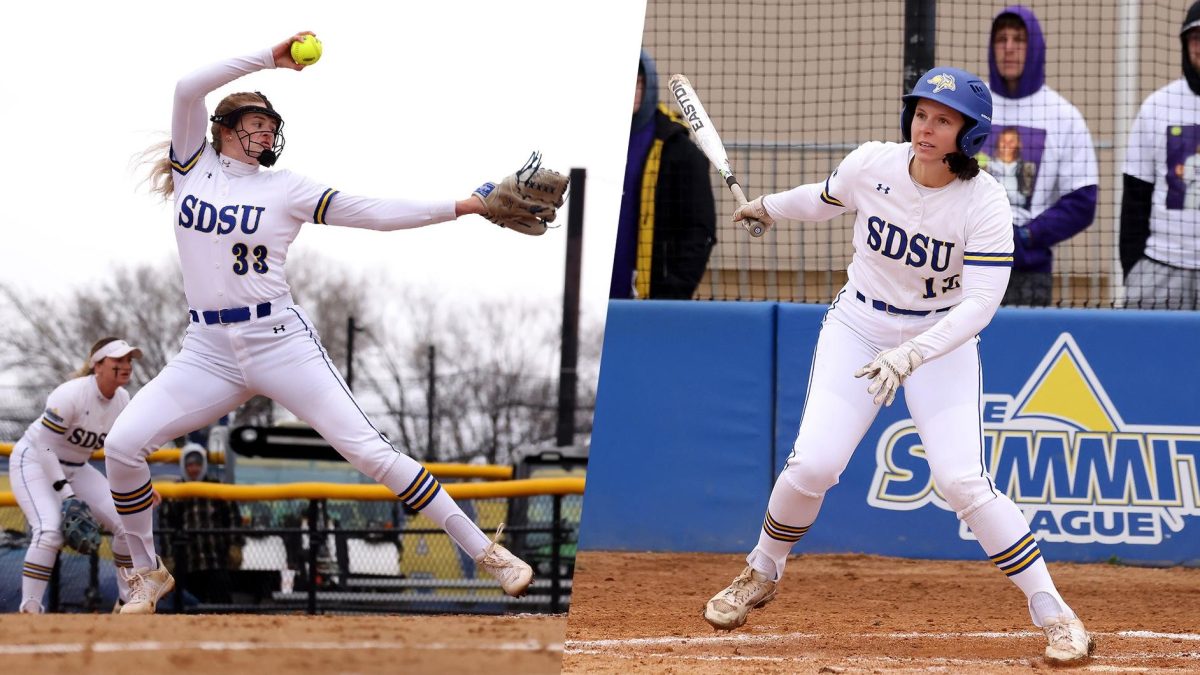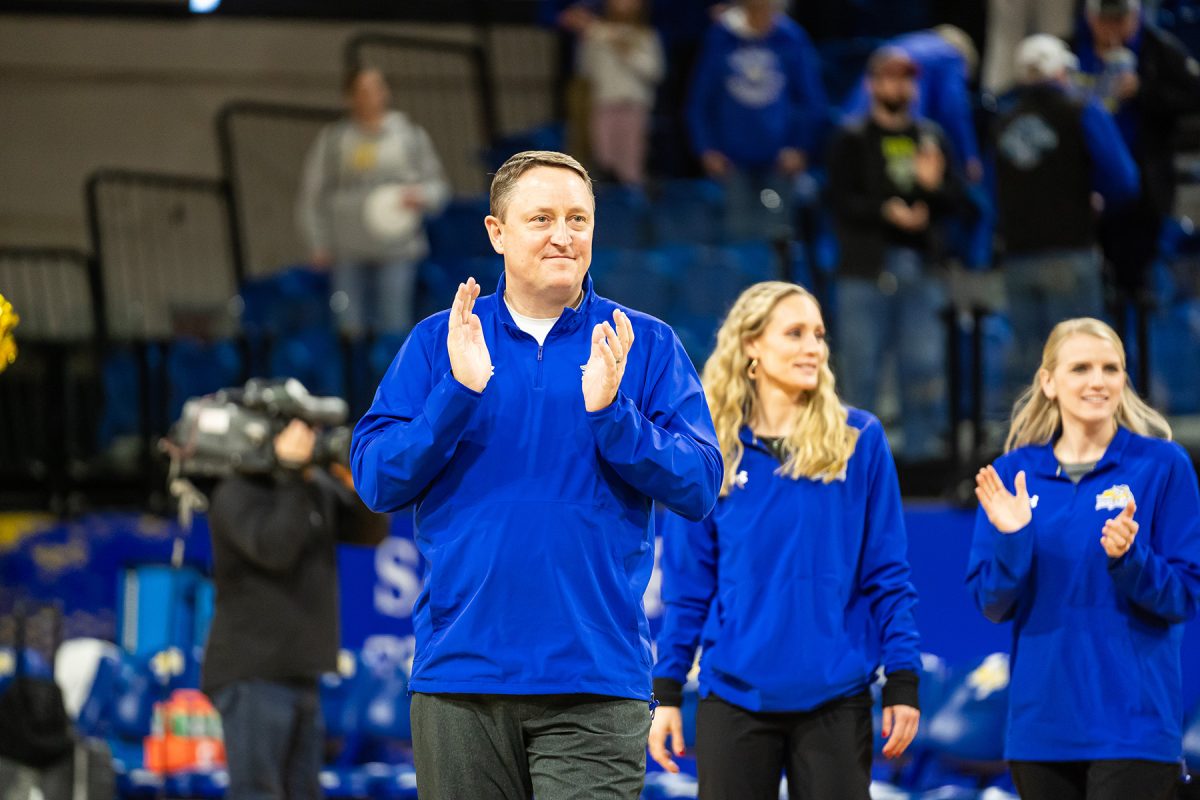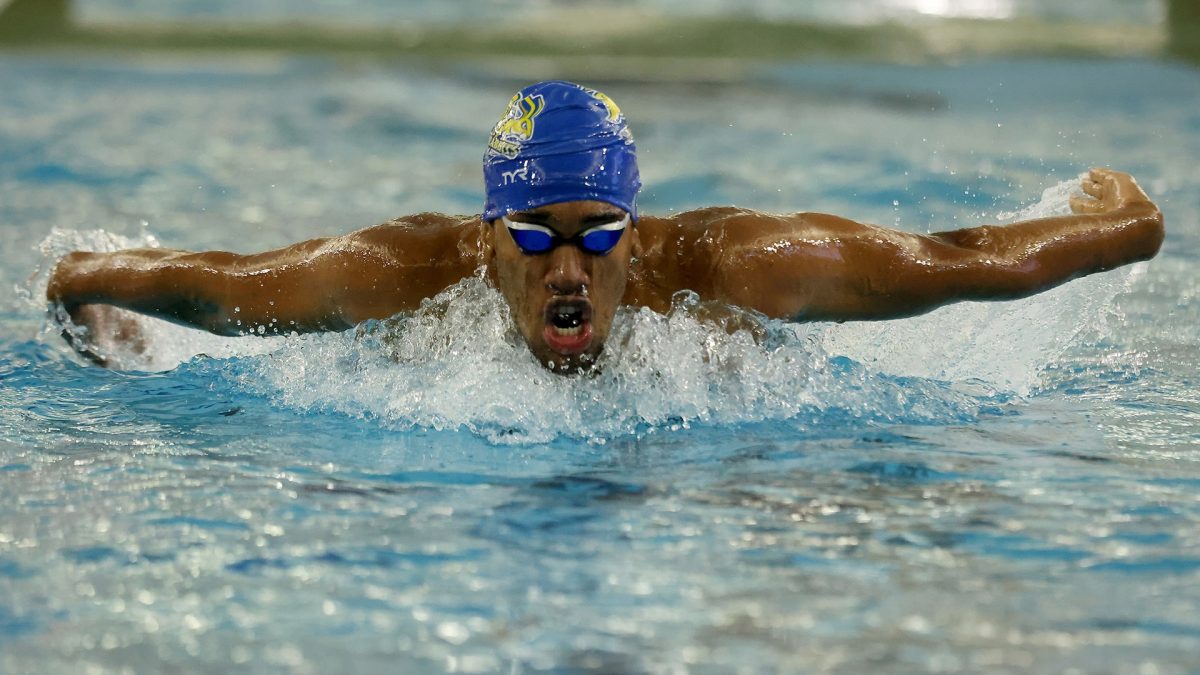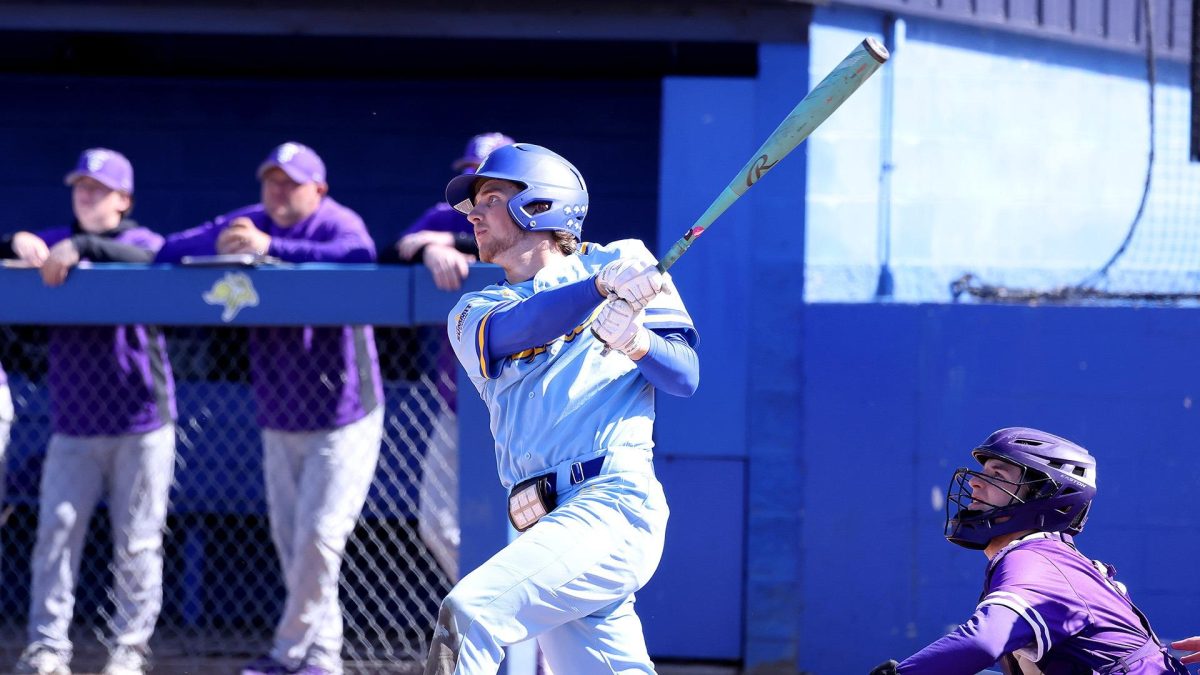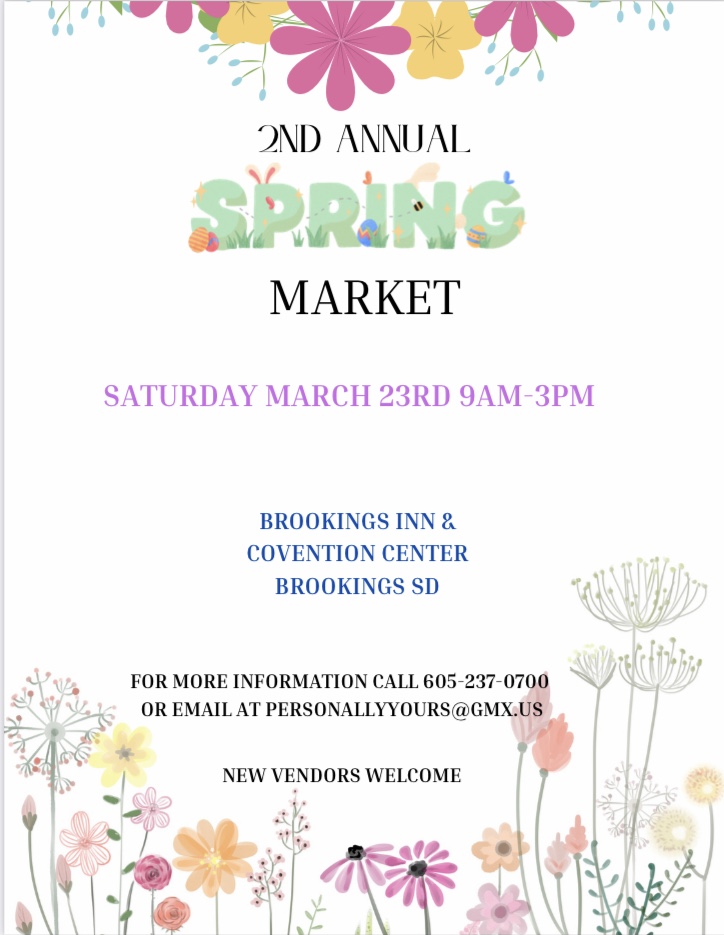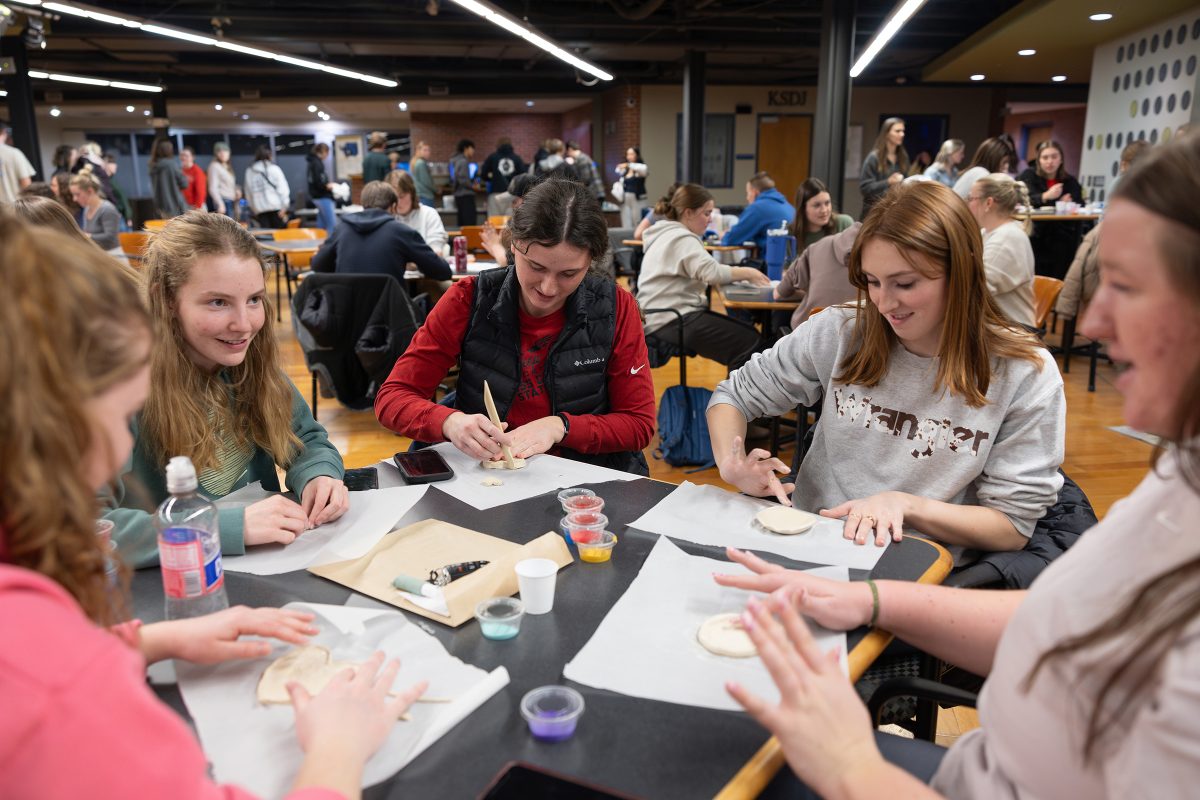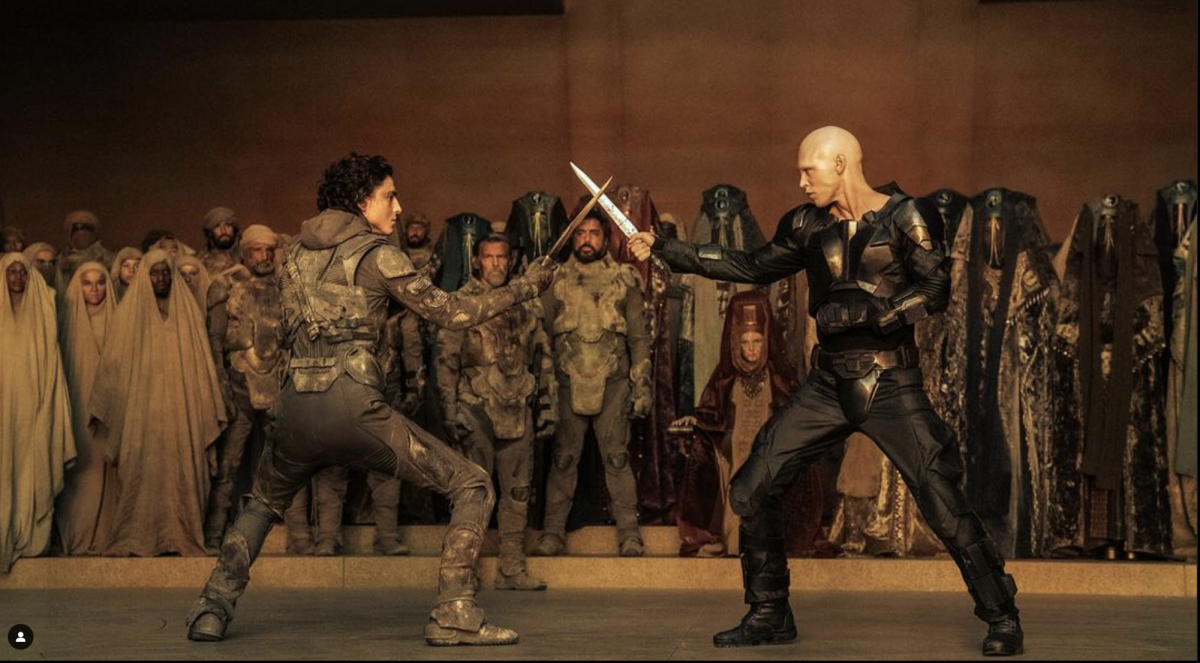Students get the chance to demonstrate fashion skills
February 18, 2016
Muddy country boots. Knitted hipster beanies. Vinyl leather jackets. Torn urban jeans. Pink floral dresses.
South Dakota State University can represent a variety of fashion trends and the student body often reflects the various fashion trends taking shape at large within the United States. One particular scene on campus is providing a space for students to express themselves in the world of fashion.
Three window displays in Wagner Hall are used each fall semester to display mannequins dressed in the latest clothing trends designed by students.
Fashion promotion is an apparel merchandising taught by Nancy Lyons, associate professor, every fall semester. The course focuses around studying current fashion trends and their influences. The class meets for about four hours each week to discuss the advertising around the fashion industry, how retail stores operate and other factors that contribute to the world of apparel.
Students are divided into small groups of three to four for the semester and work together throughout the semester as many as seven times creating various displays for the hall window displays. With more than two dozen mannequins to work with, students work with mannequins of varying sizes and both genders.
Students are required to pay a $50 deposit to use the window displays for the class.
The fall 2015 class dressed their mannequins seasonably, often to coincide with sports seasons and the students’ interests. One group of students chose to dress one of the displays in what they called “tailgating” attire while another chose to create formal wear for the mannequins, complete with nic-nacs and other accessories.
Lyons began teaching the class at SDSU more 35 years ago and began to integrate the use of mannequins into the class later to provide students with a unique educational opportunity.
“I thought that the use of the mannequins would give students a good sense for apparel merchandising similar to what they would be doing in a retail store,” Lyons said. “I think that as we continue with the mannequins, they seem to be getting better year after year.”
Students use class time to create the displays and meet after class in their groups to work on the project. Fashion themes for the window displays and their mannequins have always been up to students. After the various displays are designed, students are graded on their creations and critique each other’s work.
A student who created one of last year’s Wagner mannequin display was Brielle Mears, a junior apparel merchandising student.
One aspect of the mannequin assignments Mears found difficult in the class was how the supplies for the display were brought forward in each group.
“To dress the mannequins, we actually had to pay completely out of pocket for all of the materials and the apparel that we included in the window displays,” Mears said. “It made it interesting because you didn’t want to spend too much money on your display, but you also didn’t want to limit what you could put in your display.”
Mears said her group had to be resourceful in gathering supplies for their projects in working on the displays. All of the items she and her fellow students used were from the students themselves.

